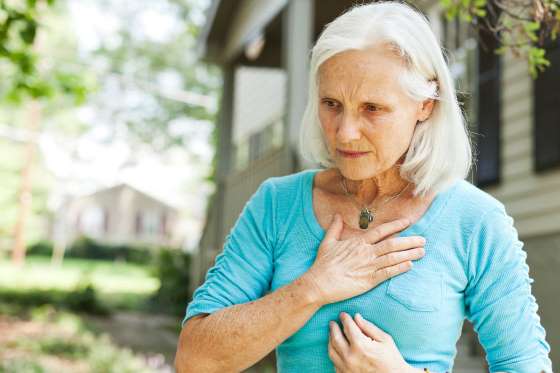HEARTBURN CAN MIMIC A HEART ATTACK
If you’ve ever been pregnant, had spicy food, eaten too much, or just generally been an adult human being, you’ve probably had heartburn at some point. Usually, it’s nothing to be alarmed about, but there are instances when you shouldn’t ignore it.
The symptoms of heartburn can be similar to those of a heart attack or angina—a crushing type of chest pain that is caused by decreased blood flow to the heart. There are some rules of thumb for differentiating between heartburn and a heart attack. For instance, heartburn typically gets worse when lying down and can leave a sour taste in your mouth. However, there are exceptions. When in doubt, you should always see a doctor. And always go to the emergency room if you are experiencing chest tightness, break into a sweat, turn pale, become extremely weak, or pass out.

YOUR HEARTBURN COULD ACTUALLY BE GALLSTONES
Gallstones are pieces of hardened digestive fluid that can form in your gallbladder, a small organ to the right of your abdomen. A gallstone blocking your bile duct can cause cramping in the middle or upper-right side of your abdomen. Often, the pain occurs just after eating—similar with heartburn. If you are having consistent stomach pain after eating that doesn’t approve after taking an antacid, contact your physician.

SEVERE HEARTBURN COULD BE A SYMPTOM OF GERD
People with GERD often have heartburn, but it is a symptom of a larger problem. GERD is a chronic digestive disease that happens when stomach acid or stomach content flows back into your esophagus. (Your body will thank you for trying these GERD home remedies.) The reflux irritates the lining of the esophagus, causing GERD. If you are experiencing heartburn or acid reflux at least twice a week, or if it is interfering with your daily life, it’s time to see a doctor.

GERD CAN LEAD TO BARRETT’S ESOPHAGUS
If left untreated, GERD can evolve into Barrett’s esophagus. In Barrett’s esophagus, the tissue lining of the esophagus changes to resemble the lining of the intestine. The condition increases the risk of developing esophageal cancer.

HEARTBURN PAIN COULD BE MASKING A STOMACH ULCER
A stomach ulcer is a sore found in the stomach lining. The pain of a stomach ulcer can be felt in the upper abdomen and up into the chest, and at times can be similar to the pain of heartburn. If not properly treated, ulcers can lead to bleeding, perforation in the wall of the stomach, and blockage between the stomach and small intestine. While some stomach ulcers heal on their own, some require antibiotics and even surgery.

YOUR HEARTBURN COULD BE DUE TO A HIATAL HERNIA
Your diaphragm normally has a small opening through which your esophagus passes on its way to the stomach. A hiatal hernia occurs when your stomach pushes up through this hole in your diaphragm. A large hiatal hernia can cause food and acid to back up into your esophagus, causing heartburn. If you are having persistent or severe heartburn signs or symptoms, you should see a doctor. While usually medication is enough to control it, sometimes surgery may be needed to correct it.

SEVERE HEARTBURN CAN LEAD TO ESOPHAGITIS
Esophagitis is inflammation of the esophagus, often caused by stomach acids backing up into the esophagus. This can cause painful, difficult swallowing and chest pain. If untreated, esophagitis can damage the esophagus’s lining and lead to complications such as scarring and difficulty swallowing. If your heartburn symptoms last more than a few days, don’t improve with over-the-counter antacids, make eating difficult, are accompanied by flu-like symptoms, or are accompanied by shortness of breath or chest pain that occurs shortly after eating, get checked by a doctor.

HEARTBURN COULD BE A CANCER SYMPTOM
Rarely, heartburn can be a sign of stomach or esophageal cancer. If you have been having persistent heartburn or difficulty swallowing food for three weeks or more, you should see a doctor. Other signs may include feeling food sticking in your throat when you swallow; unexplained weight loss; gassiness; feeling unusually full; nausea or vomiting; and pain or discomfort in the top of the stomach.












